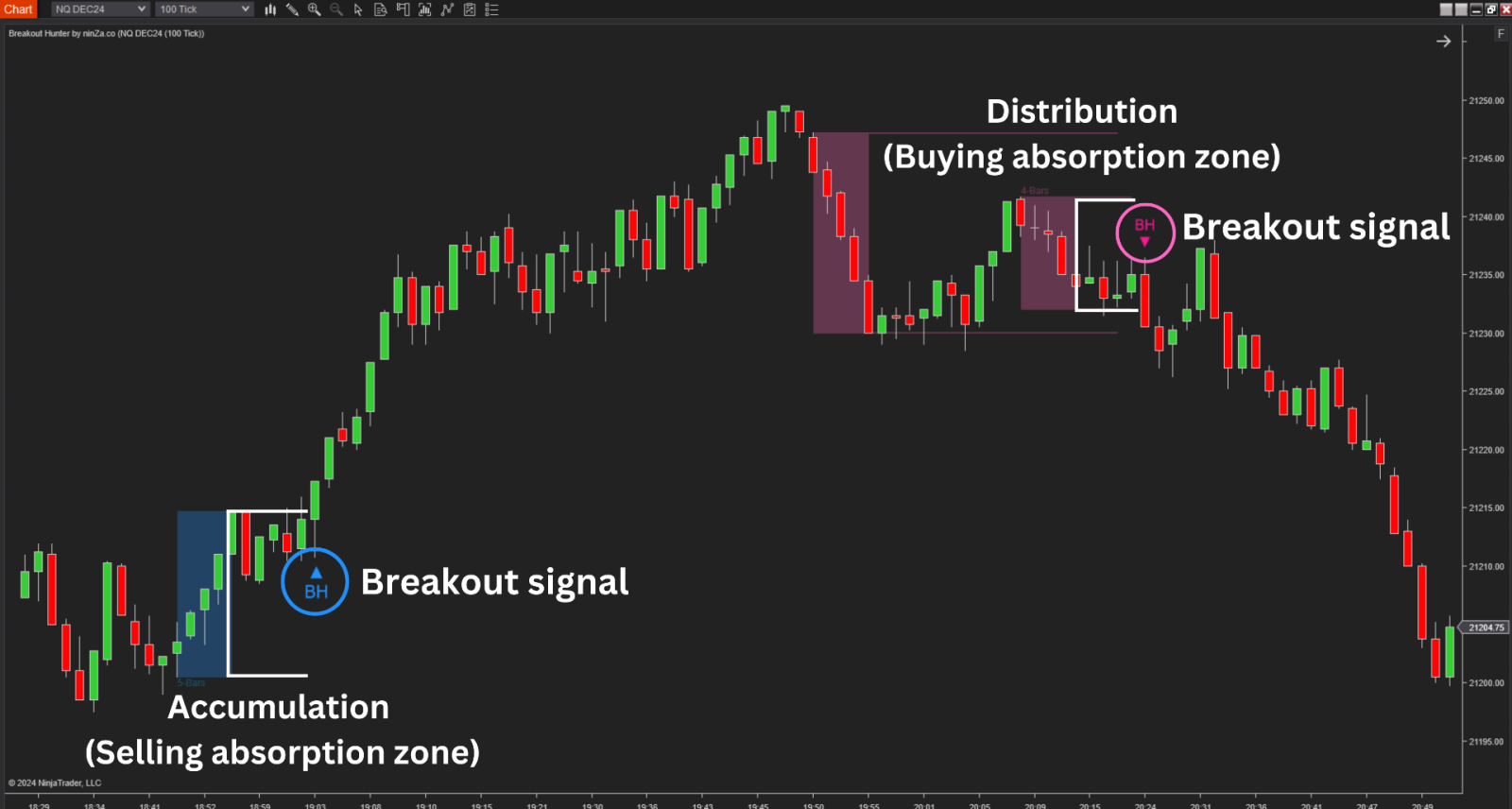Price never moves in a straight line. It goes through phases. Two key phases that repeat over and over in the market are accumulation & distribution. However, many traders confuse the two, because on the surface they often look the same: price moves sideways within a range.
This blog will help you recognize when price is accumulating and when it is distributing, and why it matters.
Why is it important to identify these phases?
As Wyckoff observed, before price can rise significantly, the market needs to accumulate. Before price can fall significantly, it needs to distribute.
If you can identify these phases correctly, you can align yourself with the larger players in the market instead of being trapped on the wrong side.
What is Accumulation?
Accumulation is a phase where buyers (often large traders or institutions) quietly build their positions after a downtrend, before pushing the price higher.
It usually happens near the bottom of a move, after a sharp decline. Buyers step in at attractive low prices, absorb the remaining selling pressure, and “build a base” for the next uptrend.
What Is Distribution?
Distribution is the opposite of a phase where sellers (again, often large traders) quietly unload their positions after an uptrend, before driving the price lower.
It usually happens near the top of a move, after a strong rally. Sellers use the high prices to exit their positions, absorbing the remaining buying pressure before a downturn begins.
Why do traders confuse them?
The main reason is that both accumulation and distribution often appear as sideways price action, a range or consolidation.
On the chart, they look similar: price bouncing between support and resistance. But mistaking distribution for accumulation (or vice versa) can lead to entering trades in the wrong direction, resulting in unnecessary losses.
How to recognize Accumulation & Distribution
Here are some typical signs of accumulation:
Location: It happens near the lows, after a sharp downtrend.
Price behavior: Price moves sideways in a range as selling dries up and buyers quietly take control.
Volume: During accumulation, buying volume tends to outweigh selling volume. You may see strong volume on up moves and lighter volume on down moves, suggesting buyers are absorbing supply.
This is also when large traders are said to be “building a base” or “loading up” at low prices.
Here are the typical signs of distribution:
Location: It happens near the highs, after a strong uptrend.
Price behavior: Price moves sideways in a range as buying interest starts to fade and sellers begin to dominate.
Volume: During distribution, selling volume tends to outweigh buying volume. You may see strong volume on down moves and weaker volume on up moves, suggesting sellers are unloading their positions.
This is when large traders are “selling into strength” and preparing for the next downturn.
It’s not always textbook
In practice, accumulation and distribution do not always play out perfectly according to theory. These phases can occur at different points during a move, not just at the absolute bottom or top.
For example:
- After 2–3 strong bullish candles, price often needs to pause and “build a base” (mini-accumulation) before it can continue rising.
- Similarly, after 2–3 strong bearish candles, price often needs a phase of “distribution” within that range before it can continue falling.
This idea — that price needs to build and release energy even within trends — is also the concept behind the Breakout Hunter indicator.
A practical indicator: Breakout Hunter

Breakout Hunter is a dedicated Wyckoff-based indicator, designed to:
- Identify Absorption Zones, which alert you when the market is in a sideways phase, helping you avoid poor entries and stay patient.
- Highlight reliable breakout signals, showing when price is likely to leave accumulation (starting a markup) or distribution (starting a markdown).
- Suggest the right time to trade by marking areas where breakout opportunities are building.
- Suit a variety of trading styles — whether you’re a breakout trader, range trader, scalper, or just starting out.
If you feel that Breakout Hunter aligns with your trading style and can help you navigate these phases with more confidence, here’s a little gift:
- You can get Breakout Hunter for just $226 and receive Z-Trend Plus as a free gift — a total value of$ 892. [Click here]